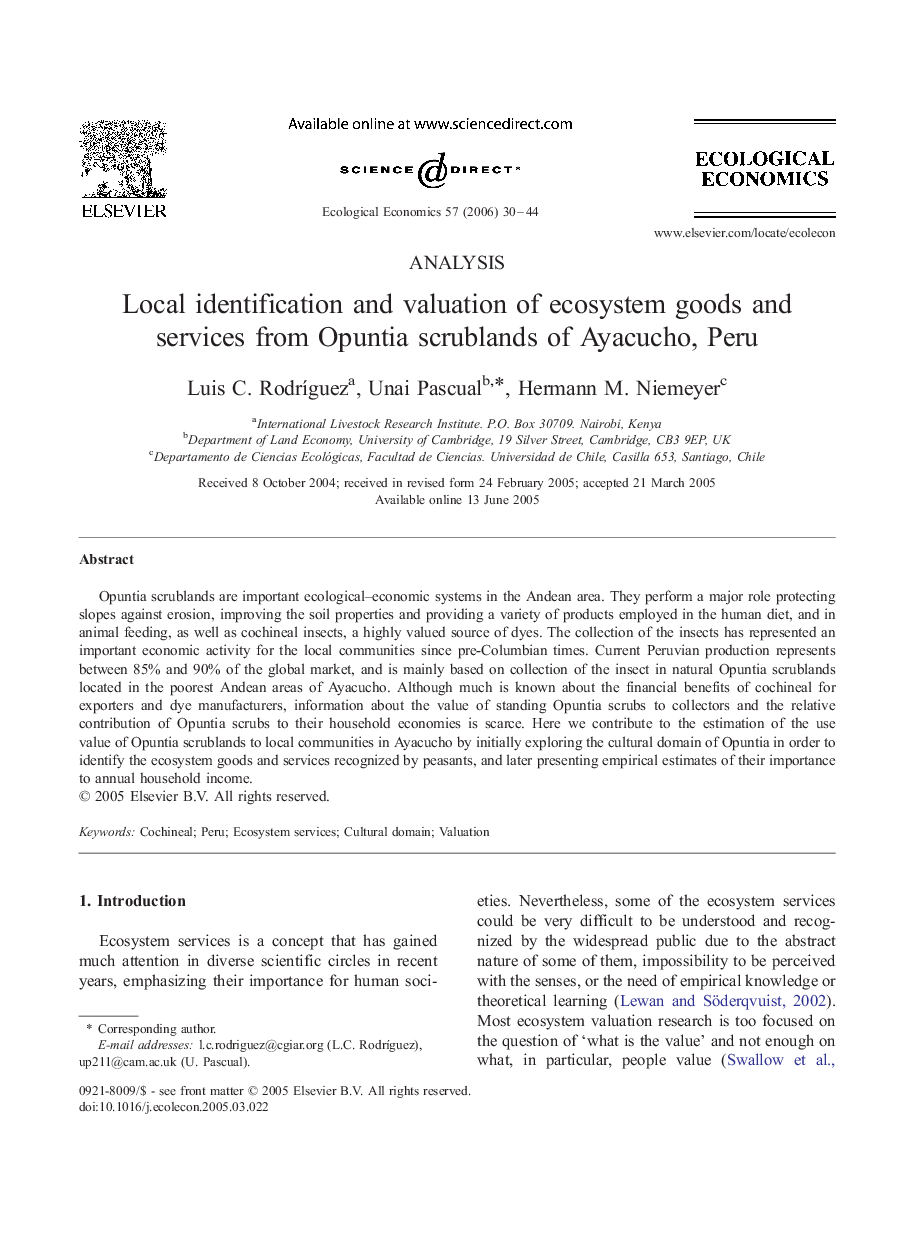| Article ID | Journal | Published Year | Pages | File Type |
|---|---|---|---|---|
| 5052567 | Ecological Economics | 2006 | 15 Pages |
Abstract
Opuntia scrublands are important ecological-economic systems in the Andean area. They perform a major role protecting slopes against erosion, improving the soil properties and providing a variety of products employed in the human diet, and in animal feeding, as well as cochineal insects, a highly valued source of dyes. The collection of the insects has represented an important economic activity for the local communities since pre-Columbian times. Current Peruvian production represents between 85% and 90% of the global market, and is mainly based on collection of the insect in natural Opuntia scrublands located in the poorest Andean areas of Ayacucho. Although much is known about the financial benefits of cochineal for exporters and dye manufacturers, information about the value of standing Opuntia scrubs to collectors and the relative contribution of Opuntia scrubs to their household economies is scarce. Here we contribute to the estimation of the use value of Opuntia scrublands to local communities in Ayacucho by initially exploring the cultural domain of Opuntia in order to identify the ecosystem goods and services recognized by peasants, and later presenting empirical estimates of their importance to annual household income.
Related Topics
Life Sciences
Agricultural and Biological Sciences
Ecology, Evolution, Behavior and Systematics
Authors
Luis C. RodrÃguez, Unai Pascual, Hermann M. Niemeyer,
